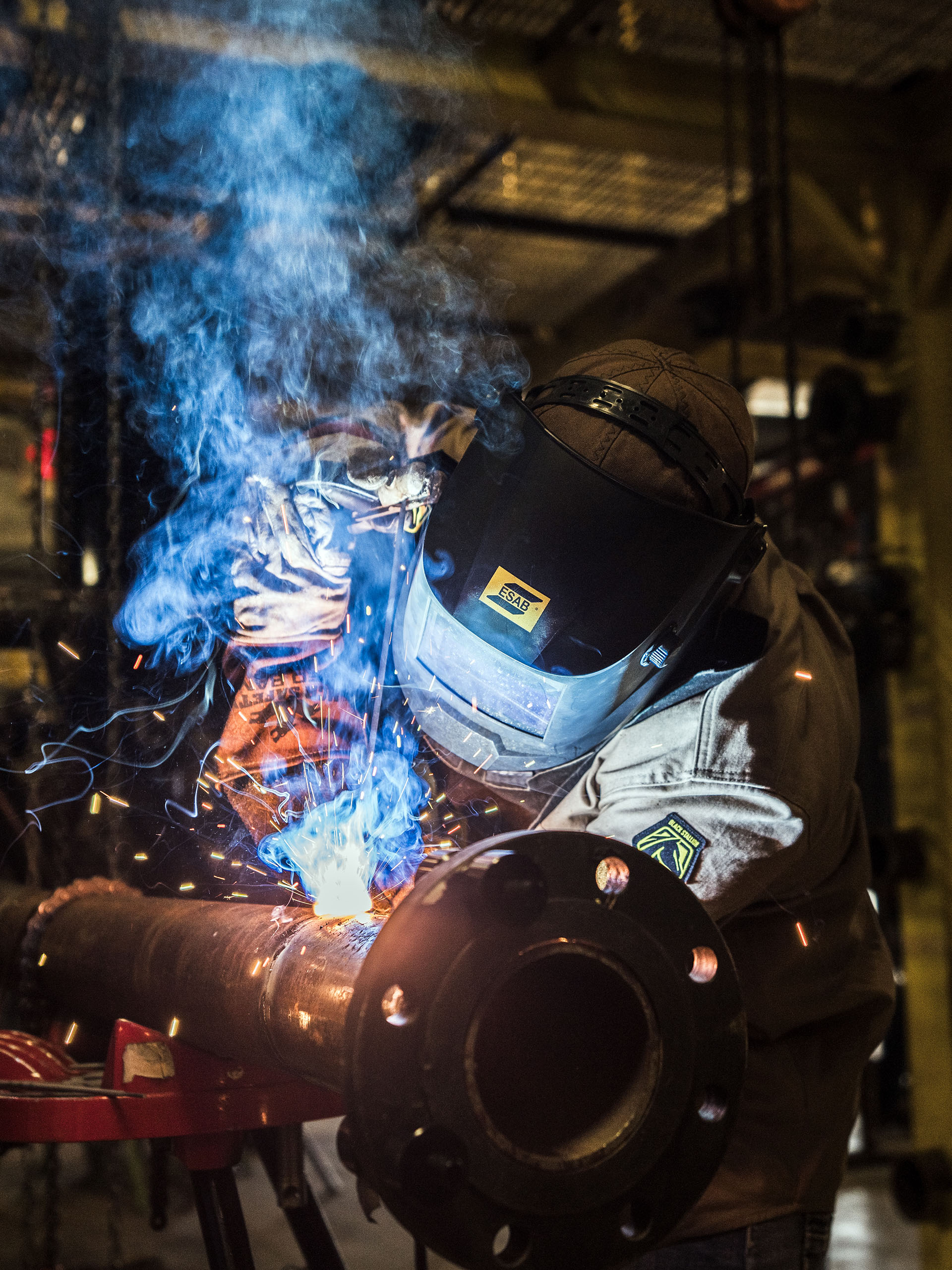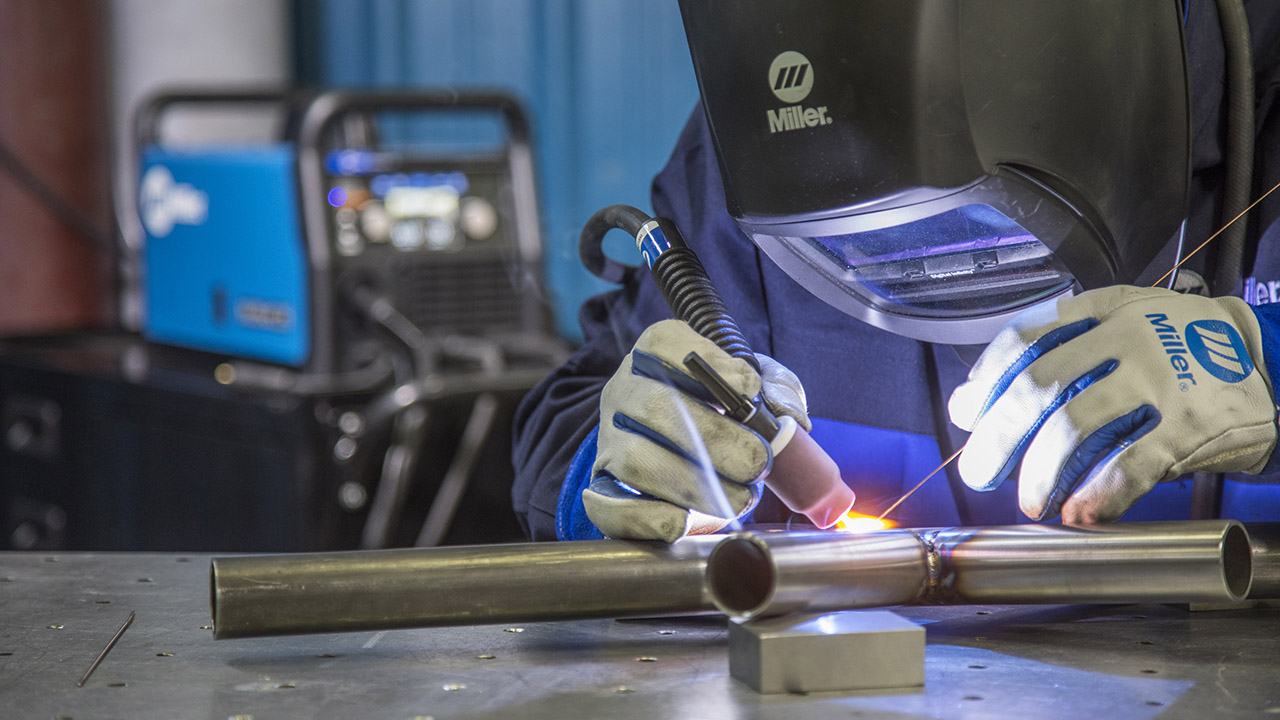All Regarding Welding: Secret Insights Into Techniques and Finest Practices for Success
Welding incorporates a variety of techniques, each suited for specific products and applications. Understanding these approaches, such as GMAW, SMAW, and TIG, is necessary for accomplishing optimal outcomes. The appropriate tools and safety and security practices can not be forgotten. As preparation and repairing play crucial roles in the welding procedure, mastering these aspects can substantially enhance the top quality of the end product. What are the essential factors that assure an effective weld?
Comprehending Various Welding Methods
Welding techniques incorporate a selection of methods, each matched to specific applications and products. Among one of the most common strategies are Gas Metal Arc Welding (GMAW), Shielded Metal Arc Welding (SMAW), and Tungsten Inert Gas Welding (TIG) GMAW, likewise referred to as MIG welding, is prominent for its speed and versatility, making it ideal for slim products. SMAW, or stick welding, is preferred for its simplicity and performance in outdoor environments, specifically with thicker metals. TIG welding supplies precision and control, making it suitable for intricate work and non-ferrous metals (Fabrication). Each method has its one-of-a-kind advantages and factors to consider, allowing welders to select the most effective technique based on the project's requirements, product type, and preferred outcomes. Understanding these methods is crucial for successful welding
Essential Welding Equipment and Tools
While different welding techniques call for specific skills, the appropriate equipment and tools are equally important for attaining quality results. Important welding equipment consists of welding makers, which vary depending upon the technique-- such as MIG, TIG, or stick welding. Protective gear, including headgears, gloves, and aprons, assurances safety and comfort during the procedure. In enhancement, components and clamps help secure products in location, making sure accuracy in welds. Consumables like welding rods, wire, and protecting gas are likewise essential components that affect the high quality of the weld. Additionally, tools such as grinders and cutters facilitate surface area preparation and post-weld finishing, adding to a professional result. Purchasing top quality devices inevitably improves the effectiveness and performance of welding tasks.
Safety And Security Practices in Welding
Correct security methods are necessary in the welding sector to protect workers from potential dangers. Welders should wear suitable individual protective tools (PPE), including headgears with proper shading, handwear covers, and flame-resistant apparel. Appropriate ventilation is essential to reduce exposure to hazardous fumes and gases created during the welding procedure. In addition, workers ought to be learnt the right handling of welding equipment to stop mishaps. Fire precaution, such as keeping flammable materials far from the welding area and having fire extinguishers conveniently available, are required. Regular inspections of equipment and offices can assist identify possible risks prior to they bring about accidents. By sticking to these safety practices, welders can produce a safer working atmosphere and lessen threats related to their trade.
Readying Materials for Welding
Preparing materials for welding is an essential step that considerably influences the high quality and honesty of the last product (Belgrade). Correct preparation entails cleaning up the surfaces to remove contaminants such as dirt, oil, and corrosion, which can endanger the weld. Methods such as grinding, fining sand, or using solvents are typically utilized to achieve a clean surface area. In addition, ensuring that the materials mesh snugly is essential; voids can lead to weak welds. It's also vital to think about the alignment and positioning of the components, as this will certainly influence the ease of welding and the final outcome. Choosing the appropriate filler material and making sure compatibility with the base steels is important for accomplishing strong, resilient welds.
Tips for Achieving High-Quality Welds
Attaining premium welds requires attention to information and adherence to best practices throughout the welding procedure. Correct joint preparation is important, ensuring surfaces are tidy and free from impurities. Choosing the proper filler material and welding technique based on the base metals is important for excellent bonding. Keeping consistent traveling rate and angle while welding can promote and avoid flaws uniformity. In addition, managing warm input is crucial; too much warmth can bring about bending and compromised joints. If needed, consistently examining the welds throughout the procedure permits aluminum welding near me for immediate adjustments. Finally, utilizing suitable post-weld treatments, such as cleansing and anxiety alleviation, can enhance the durability and integrity of the weld, inevitably guaranteeing a successful outcome.
Repairing Common Welding Issues
Welding typically presents obstacles that can affect the top quality and honesty of the end product. Common concerns such as porosity, inconsistent weld beads, and getting too hot can arise, each calling for details troubleshooting methods. Understanding these issues is essential for welders to improve their abilities and attain optimal outcomes.
Porosity Issues Discussed
Although porosity can typically be overlooked, it stays a critical issue in welding that can endanger the integrity of a completed item. Porosity refers to the visibility of small gas pockets within the weld bead, which can lead and weaken the joint to premature failure. This issue normally emerges from impurities, moisture, or improper securing gas coverage during the welding procedure. To alleviate porosity, welders ought to verify that the base materials are clean and completely dry, make use of proper securing gases, and preserve constant welding criteria. Frequently checking the tools and environment can likewise aid recognize prospective issues prior to they show up in the weld. Addressing porosity successfully is crucial for accomplishing strong, long lasting welds that satisfy high quality requirements.

Irregular Weld Beans
Inconsistent weld beads can greatly influence the high quality and strength of a finished product. Numerous variables add to this problem, consisting of inappropriate travel rate, wrong amperage settings, and inconsistent electrode angles. When the welder moves as well promptly, a grain may show up slim and lack infiltration, while relocating too gradually can cause excessive build-up. Additionally, utilizing the wrong amperage can lead to either damaging or extreme spatter, both of which concession weld stability. The welder's strategy, such as irregular lantern activity, can also cause unequal bead look. To reduce these problems, welders should concentrate on maintaining steady, controlled motions and guaranteeing proper devices setups to attain harmony in their welds. Uniformity is key to accomplishing dependable and strong welds.
Overheating and Bending Issues
Too much warmth throughout the welding process can result in substantial getting too hot and warping problems, influencing the structural integrity of the workpiece. These issues typically show up as distortion, which can endanger placement Website and fit-up, making further setting up testing. Elements contributing to overheating consist of the option of welding specifications, such as voltage and travel rate, as well as the kind of material being bonded. To minimize these issues, welders should maintain regular travel speed and appropriate warm input while keeping an eye on the workpiece temperature. Furthermore, pre-heating or post-weld warmth treatment can aid alleviate tensions brought on by quick cooling - Fabrication. Routine examination and adherence to best techniques are crucial in stopping getting too hot and making certain the long life and reliability of bonded structures
Often Asked Concerns
What Are the Profession Opportunities in the Welding Sector?
The welding market provides varied profession possibilities, including placements as welders, designers, instructors, and examiners. Professionals can function in manufacturing, construction, aerospace, and automotive fields, gaining from strong need and competitive incomes in various functions.
Exactly How Can I Improve My Welding Speed Without Compromising Quality?
To boost welding speed without compromising high quality, one must exercise reliable methods, keep tools, maximize settings, and boost hand-eye sychronisation. Normal training and seeking comments can also greatly add to achieving faster, top notch welds.
What Certifications Are Available for Welders?
Numerous certifications exist for welders, consisting of those from the American Welding Culture (AWS), the National Facility for Building Education And Learning and Research Study (NCCER), and different industry-specific organizations. These qualifications boost employability and show skill efficiency.
Just How Does Welding Influence the Characteristics of Metals?
Welding influences the homes of metals by modifying their microstructure, which can lead to changes in firmness, ductility, and stamina. Warm input and cooling prices throughout the process substantially impact these material features.
Can I Weld Dissimilar Metals With Each Other?
